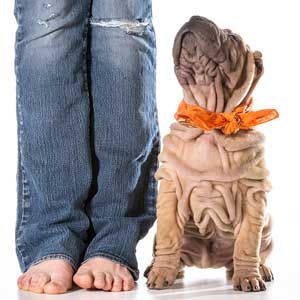Welcoming a new dog into the family can be loads of fun, but it can also be as challenging as it is exciting. Although some breeds have characteristics specific to the breed, it doesn’t mean they will all be carbon copies of each other. Like people, dogs all have their own unique personalities and some dogs get along well with other dogs and other people while other dogs need to be worked with a bit. This is called socialization and it’s something most dog owners learn to do. If you are a new dog owner and have never had to socialize a dog, here are some tips to help get you through the process – and a process it is.
1. Start with What You Know
That’s pretty good advice no matter what you’re attempting to do, right?! Before you can begin working with your dog, it is important to take careful stock of the various factors which will affect your new dog. What kind of lifestyle do you lead? Do you often have guests and will you be taking your dog on walks in heavily populated areas? In other words, make a checklist of the most common ways in which your dog may be in a place where he needs to interact with people or other animals. These are the behaviors you are going to start working on.
2. Puppies and Younger Dogs Are Easier to Socialize
You can’t teach an old dog new tricks. Well, you can, but it’s harder than teaching a young dog new tricks. Although older dogs can be socialized, it may take a bit more work. Unless you know the background of the dog and whether it came from a loving home or had a history with other pets, you could be dealing with a dog that has social anxiety. Just as people can be knocked down by the trials and tribulations of life, so, too, can dogs. Puppies have no life experiences as yet and so you can begin introducing them slowly to other humans and animals to help teach them that they aren’t a threat.
3. Have Patience with Older Dogs
Older dogs can often take a bit more time to learn what you’re expecting. As mentioned above, some dogs have been abused but it doesn’t mean that they won’t be amazing pets. Anyone rescuing a dog from a shelter or pound understands that these fur babies just need extra love and care much of the time. You will need to go even slower with older dogs because they have learned behaviors and acquired habits, not all of which are good. So have patience with a senior dog, especially if you’re not entirely aware of the experiences the dog may or may not have had previously. In fact, have patience with a puppy, too. Patience is never a bad thing to have.
4. Start With Dog Walking Services for Older Dogs
Unless you know the background of an older dog, it might be a bit frightening for everyone involved, including the dog, if you immediately try to take it to a park or a friend’s house to show it off. Dog walking services like those available on the Wag! website (who operate all across the US in areas like Chicago) can help you introduce your new dog to other new people gradually. These experienced dog walkers will know how to handle new pets. Usually, it is good to introduce a dog walker before they actually take your dog out for a walk, and if you have a fenced in yard, that may be the best place to get acquainted. Dogs are territorial and will be less inclined to be protective of their space if they meet new people on neutral ground.
5. Go Slowly Near Home Before Going Public
Once again, let’s talk first about older dogs. If you don’t know the new fur baby well, it’s best to get acquainted with him first. Then gradually let him meet a few new people, preferably friends comfortable around dogs, before going public. For example, if you live in a big city like LA, New York or Chicago, the crowds may be intimidating. Don’t automatically take your dog to a dog walking Chicago park before seeing how it reacts around other animals and humans. Puppies can usually be introduced to new people much quicker, but here again, it only takes one person to spook them and you’ve just reversed much of what you’ve already done. Take it slowly with any age dog!
6. Listen to What Your Dog Is Saying
As strange as this might sound, your dog will tell you how it is feeling. You will soon learn to read its body language, and dogs do communicate if you learn to read the signs. They may not growl and bark, but you might notice that the fur down its back starting at the neck (hackles) begins to stand up straight like a mohawk. It may crouch like it’s about to lunge and then there is tail wagging. A dog wagging its tail doesn’t always mean it’s happy. It’s up to you to learn a happy wag from a warning wag.
A Truly Rewarding Experience
Socializing your dog can be as rewarding for you as it is for your fur baby of any age. However, it takes time and patience.
 Some people like to reward their dogs with a treat when they handle situations well and others find that love and encouraging words work better. You need to find what works best with your dog/puppy and maintain that reward system throughout training. As one last bit of advice, don’t forget to wean your dog off those rewards!
Some people like to reward their dogs with a treat when they handle situations well and others find that love and encouraging words work better. You need to find what works best with your dog/puppy and maintain that reward system throughout training. As one last bit of advice, don’t forget to wean your dog off those rewards!
There will come a time when your dog is truly socialized and will no longer need those tasty morsels to behave, but if you find there are one or two people to whom that dog doesn’t respond so well, it may not be the dog at all but the person you should avoid. Dogs have a sixth sense most humans lack, so learn to listen to your dog and your dog will learn to listen to you. That’s the best advice of all.




